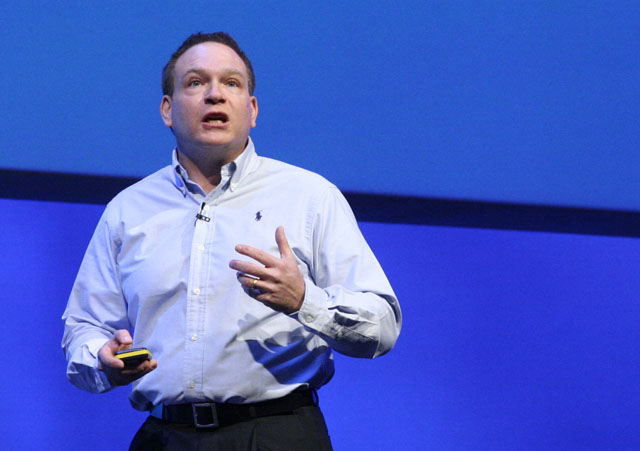Microsoft chief positions Longhorn as mainframe and Unix killer
IT Forum, Barcelona: Windows will not only dominate the desktop, but every area of business infrastructure, according to a leading Microsoft executive.

Speaking on the opening morning of Microsoft's Tech-Ed IT Forum in Barcelona, Bob Muglia, Senior Vice president of Microsoft's Server and Tools Business, was bullish about the software giant's chances of moving up the enterprise ladder.
The high end of business systems is traditionally the playground of custom designed systems and Unix mainframes. But Muglia claimed that both the new-found abilities and scalability of Microsoft SQL - in the form of SQL Server 2005 - and more importantly the advent of virtualisation, would enable CTOs to migrate large business infrastructures wholesale to Windows platforms.
He said that in contrast to the situation in the past, there are now "no business problems that cannot be solved" with x86 hardware running Windows.
When it came to keynote demos, the overview of Vista as a business client OS to the assembled group of over 4,000 IT professionals verged on the apologetic, being limited to a quick demo consisting of showing off live preview (hovering the mouse over the taskbar for a real-time display of an application's window), the 3D task-switcher capability and a run through of Vista's search facilities.
More convincing was the real emphasis: the server-side and infrastructure tools. The main attraction - and the theme of the whole of this year's IT Forum - is virtualisation. Rakesh Mahorta, the Group Program Manager of Microsoft System Center, demonstrated a Longhorn Server machine running three virtual machines simultaneously, each with different operating system images: Longhorn server, Windows Server 2003 x64 and Suse Linux Enterprise 10.
"The number one reason behind virtualisation is consolidation", he said. To this end he used the Virtual Machine Manager Administrator Console to dynamically increase the RAM dedicated to one of the virtual machines while it was running; the virtual machine's Task Manager immediately reflected the change.
He also claimed it's possible to increase or decrease the number of physical CPUs a virtual machine has access to, allowing for the virtual machines' loads to be balanced across the physical server without upsetting them.
Get the ITPro daily newsletter
Sign up today and you will receive a free copy of our Future Focus 2025 report - the leading guidance on AI, cybersecurity and other IT challenges as per 700+ senior executives
-
 Should AI PCs be part of your next hardware refresh?
Should AI PCs be part of your next hardware refresh?AI PCs are fast becoming a business staple and a surefire way to future-proof your business
By Bobby Hellard
-
 Westcon-Comstor and Vectra AI launch brace of new channel initiatives
Westcon-Comstor and Vectra AI launch brace of new channel initiativesNews Westcon-Comstor and Vectra AI have announced the launch of two new channel growth initiatives focused on the managed security service provider (MSSP) space and AWS Marketplace.
By Daniel Todd